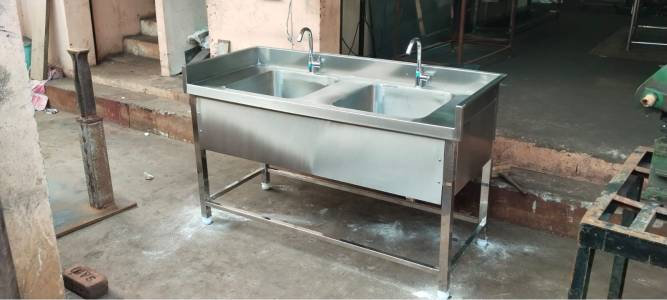Description
Stainless Steel (SS) - The Ultimate Material for Durability and Versatility
Stainless steel (SS) is a family of iron-based alloys known for their exceptional corrosion resistance, strength, and durability. This makes it a preferred material across a vast range of industries and applications. This description details the key properties and benefits of various grades of stainless steel, showcasing its versatility and suitability for diverse needs.
Key Properties & Benefits:
- Corrosion Resistance: The primary advantage of SS is its inherent resistance to rust and degradation caused by exposure to moisture, air, and various chemicals. This is due to the chromium content, which forms a passive chromium oxide layer that protects the underlying metal. The level of corrosion resistance varies depending on the specific grade of stainless steel.
- Strength & Durability: SS possesses high tensile strength and excellent impact resistance, making it ideal for applications requiring structural integrity and longevity. It can withstand significant wear and tear, making it a cost-effective solution in the long run.
- Hygiene & Cleanability: Many grades of stainless steel are non-porous and easily cleaned, making them perfect for food processing, medical equipment, and pharmaceutical applications where hygiene is paramount. They are resistant to bacterial growth and can be sterilized effectively.
- Aesthetic Appeal: SS has a sleek, modern appearance that adds a touch of elegance to any design. It's available in various finishes, from brushed to mirror-polished, allowing for customization to match specific aesthetic requirements.
- Recyclability: SS is 100% recyclable without losing its properties, making it an environmentally friendly material choice. This contributes to its sustainable appeal and minimizes environmental impact.
Grades of Stainless Steel: Numerous grades of SS exist, each with slightly different properties tailored to specific applications:
- Austenitic Stainless Steels (e.g., 304, 316): The most common types, known for their excellent corrosion resistance, ductility, and weldability. 316 SS offers enhanced resistance to chloride corrosion, making it suitable for marine environments.
- Ferritic Stainless Steels (e.g., 430): Magnetic and typically less expensive than austenitic grades. They offer good corrosion resistance and are often used in automotive and appliance applications.
- Martensitic Stainless Steels (e.g., 410): Hardenable through heat treatment, making them suitable for applications requiring high strength and wear resistance. Often used in cutlery and tools.
- Duplex Stainless Steels: Combine the properties of austenitic and ferritic stainless steels, offering high strength and corrosion resistance. Used in demanding applications such as chemical processing.
Applications:
The versatility of stainless steel is evident in its wide range of applications, including:
- Construction: Structural elements, cladding, roofing, and facades.
- Food & Beverage: Kitchen equipment, processing machinery, storage tanks.
- Medical: Surgical instruments, implants, hospital equipment.
- Automotive: Exhaust systems, body panels, decorative trim.
- Aerospace: Aircraft components, engine parts.
- Chemical Processing: Tanks, pipes, valves.
Choosing the Right Grade:
Selecting the appropriate grade of stainless steel depends on the specific application requirements. Factors to consider include:
- Corrosion environment: Exposure to chemicals, moisture, and temperature.
- Mechanical properties: Strength, ductility, and hardness requirements.
- Weldability: The need for joining components.
- Cost: Budget constraints.
By carefully considering these factors, you can ensure the selection of the most suitable stainless steel grade for your project, guaranteeing optimal performance and longevity.
